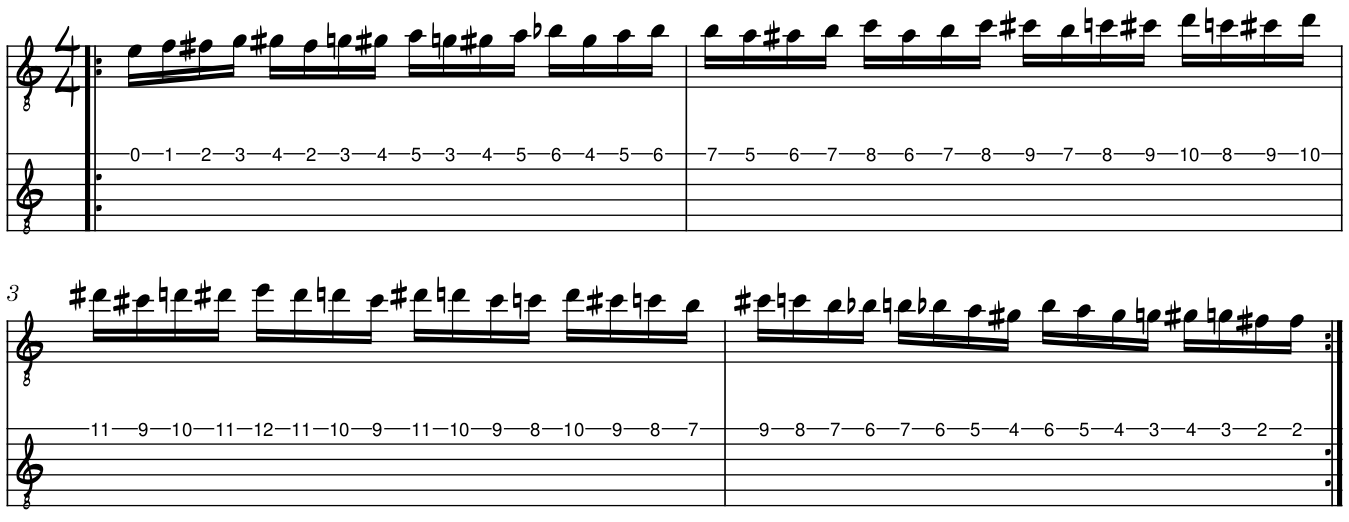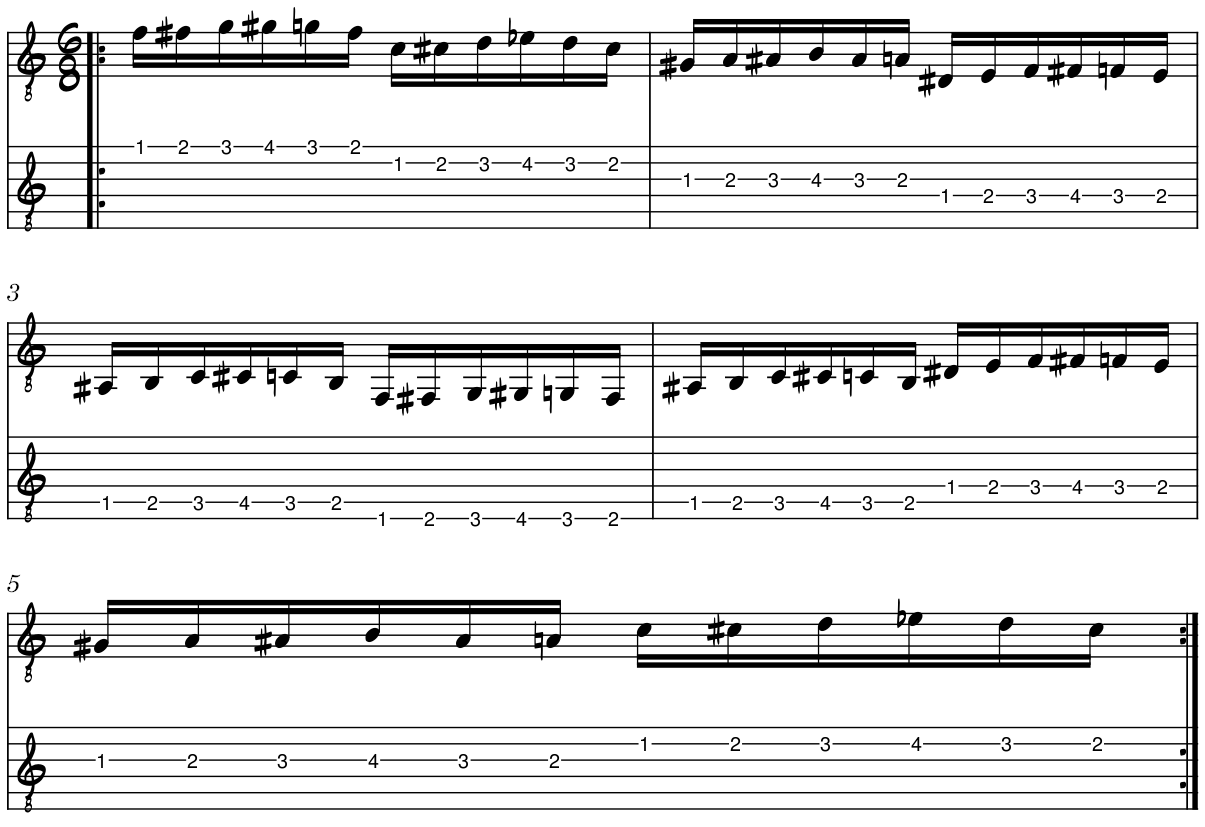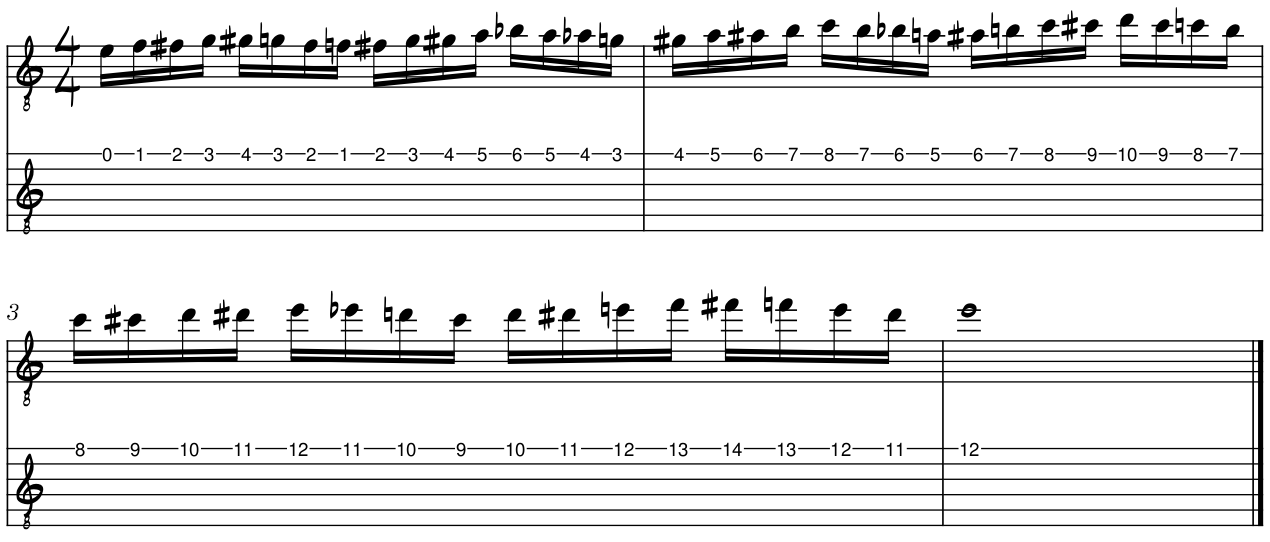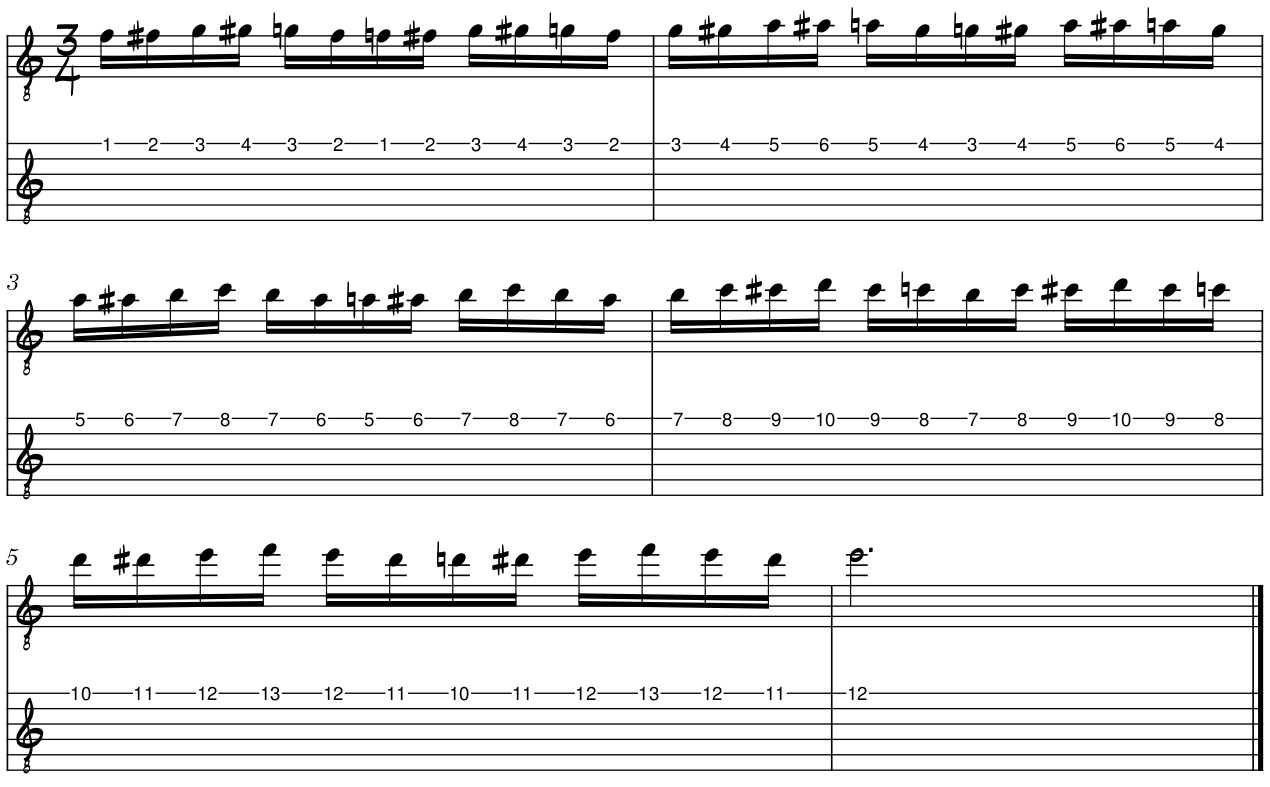Let's learn a simple yet effective exercise that will help improve your hand synchronization for fingerstyle guitar (and it's not finger stretching).
If you are playing fingerstyle guitar, you will be tasked with playing melodies, bass lines and chords in the same song.
I created 5 simple exercises to improve your hand synchronization and coordination, specifically aimed for fingerstyle guitarists. Try these awesome finger picking synchronization exercises as a warm-up.
Practice them diligently and in 14 days you will see a significant improvement in finger placement and accuracy when playing fingerstyle guitar.
The Spider: An Awesome Hand Synchronization Exercise for Guitarists
Here is an awesome exercise you can do to improve your hand synchronization if you play guitar.
Place the fretting hand on one string in one position. You will be plucking and fretting only one string. Next, play four notes exactly following this formula:
1. Pluck with the thumb of the right hand the note fretted with the index finger of the left hand
2. Pluck with the index finger of the right hand the note fretted with the middle finger of the left hand
3. Pluck with the middle of the right hand the note fretted with the ring finger of the left hand
4. Finally, pluck with the ring finger of the right hand the note fretted with the pinky of the left hand.
If you did this correctly, the tablature notes you played were:
--1--2--3--4-- -------------- -------------- -------------- -------------- --------------
Make sure that each plucked note uses a separate right hand finger. For example, you would use your thumb to pluck the lowest note, your index finger to pluck the next note, your middle finger to pluck the third note, and your ring finger to pluck the highest note.
Once you have plucked all four notes in this manner, move the left hand up one position (one fret) and begin the exercise a second time.
This time, you would play:
--2--3--4--5-- -------------- -------------- -------------- -------------- --------------
And so on, all the way to the top of the guitar fretboard.
The online course Play Fingerstyle Guitar Now! shows you how to develop these skills with multiple examples.
How Spider Exercises Work
The notes you played from these spider exercises are from a scale called the chromatic scale. A chromatic scale is a musical scale that consists of all twelve notes within an octave, played in succession, without skipping any notes
The notes that you played in the spider exercise on the first string are F (first fret), F♯ (second fret), G (third fret), and G♯ (fourth fret).
The right hand, which takes care of plucking the strings, generally stays in the same area. The left hand, in contrast, has to span the entire guitar fretboard, in some cases.
These spider exercises strengthen the muscles in your left hand which will help you to be able to play faster and more accurately.
If you are looking for more exercises to develop your hand dexterity, check out the complete course for playing fingerstyle guitar, Play Fingerstyle Guitar Now! This course is chock-full of technical exercises designed to 10x your fingerstyle guitar skills.
5 Incredible Spider Exercises for Guitar Players
Here are 5 awesome spider exercises that you can try out to improve your hand synchronization. They go across multiple strings as well as frets.
These 5 exercises are perfect for players of all levels and can be easily incorporated into your daily practice routine.
1. Lauren's Easy Triple Spider
I found out about this spider exercise after watching Lauren Bateman's introductory crash course for learning guitar. I thought it was a brilliant idea to start out the spider exercise with only three fingers.

1b. Lauren's Tricky Weak Spider
What's a spider exercise without working on the weaker fingers? Here's the same triple spider as above, except this time we use our weaker fingers and leave out the index.

2. Single String Spider
We started out by doing a spider exercise on a single string. And now, here's the full spider exercise going up and down the fretboard on one string.

3. Isabelle's Spider
Here is a spider exercise I found in Isabelle Héroux's book on classical guitar, which goes up and down the guitar strings. This is similar to Lauren's exercise, but with four fingers instead of three.

4. Wavy Spider Exercise
This spider exercise is similar to the single string exercise, but this time we play an ascending pattern followed by a descending pattern. Play this exercise on all the strings.

5. Hilly Spider Exercise
If you liked the wavy spider exercise but you want something that goes up and must come down, then this is the one for you. This exercise is a little like a tongue twister for your fingers.

How To Improve Coordination Between Picking And Fretting Hands
Although your finger picking hand is responsible for plucking, an awkward finger placement in your fretting hand can seriously affect your finger picking. This is because it will take you more time to fret an awkward chord instead of a more comfortable or natural chord.
Consequently, this could hinder your ability to synchronize and coordinate the actions of both hands effectively.
If you find that your fretting hand just can't keep up with your picking hand, see if you are using the best fretting hand position for the passage that you are about to play.



